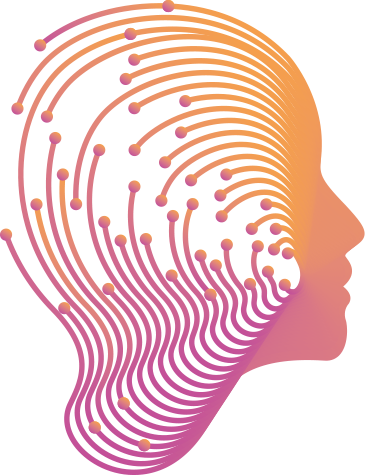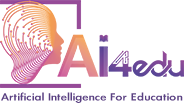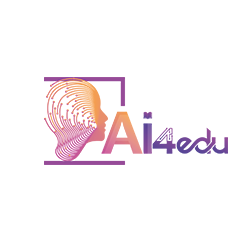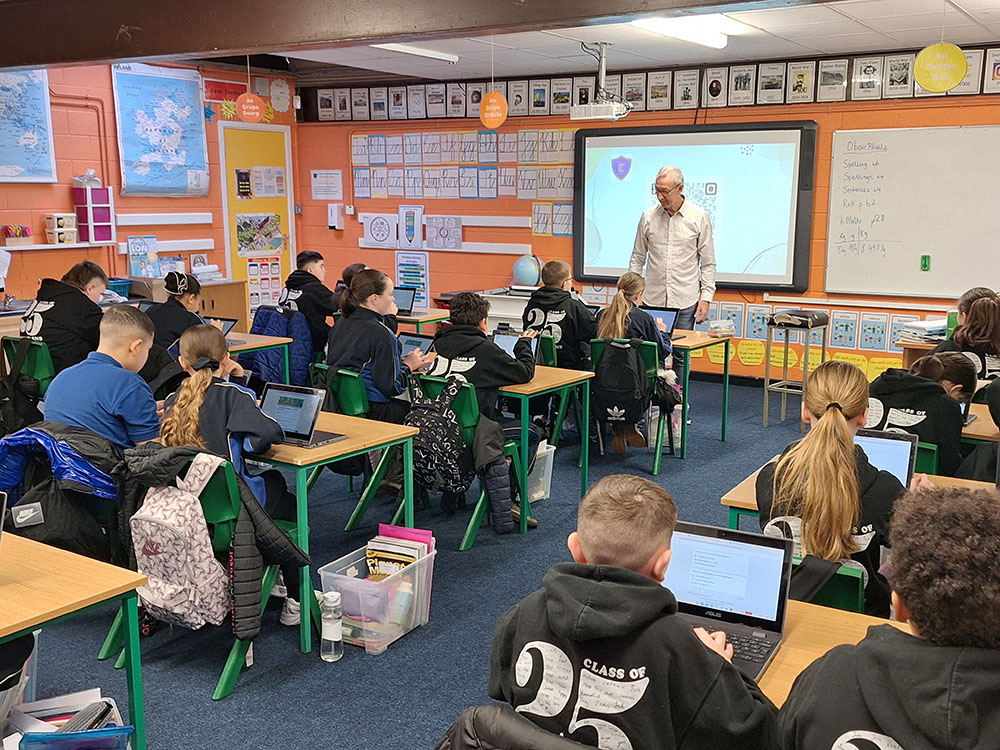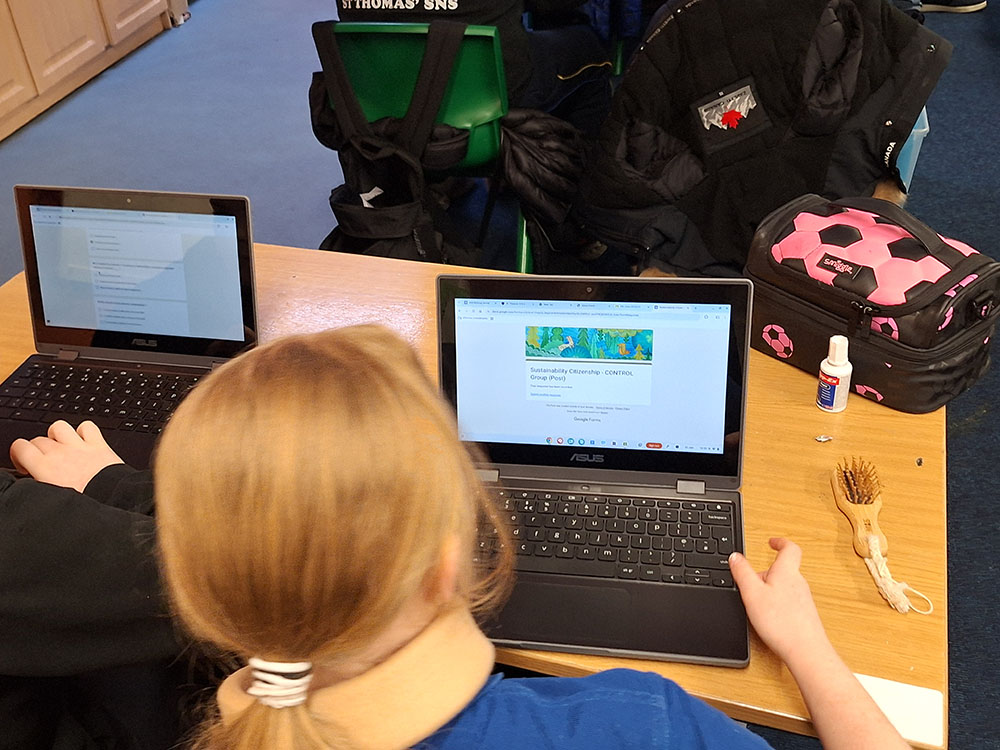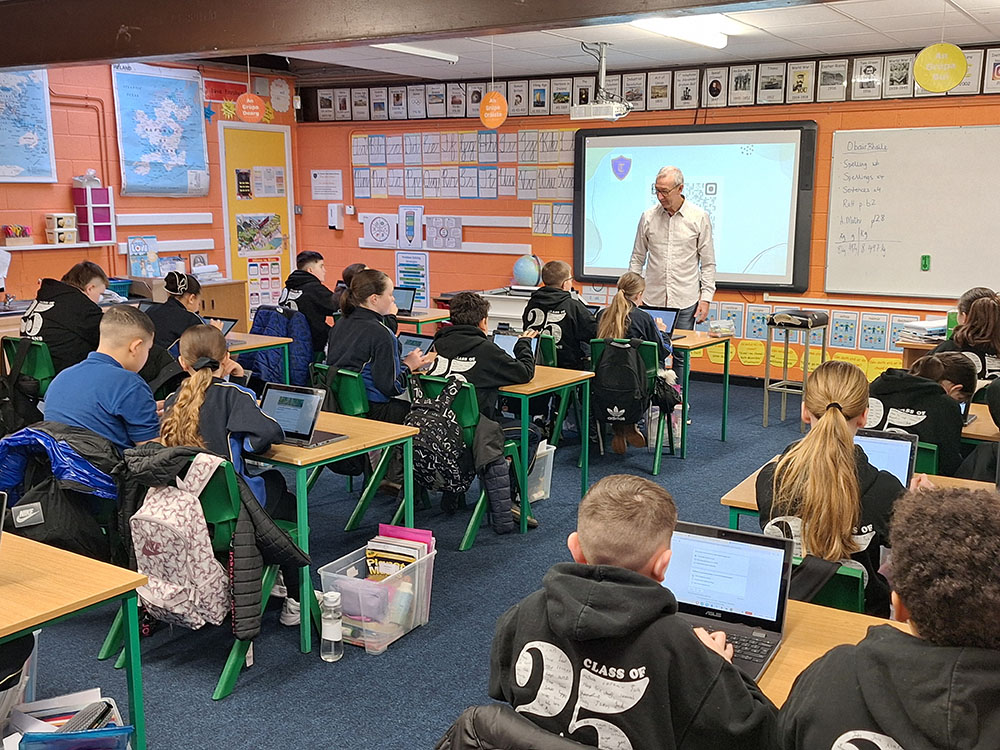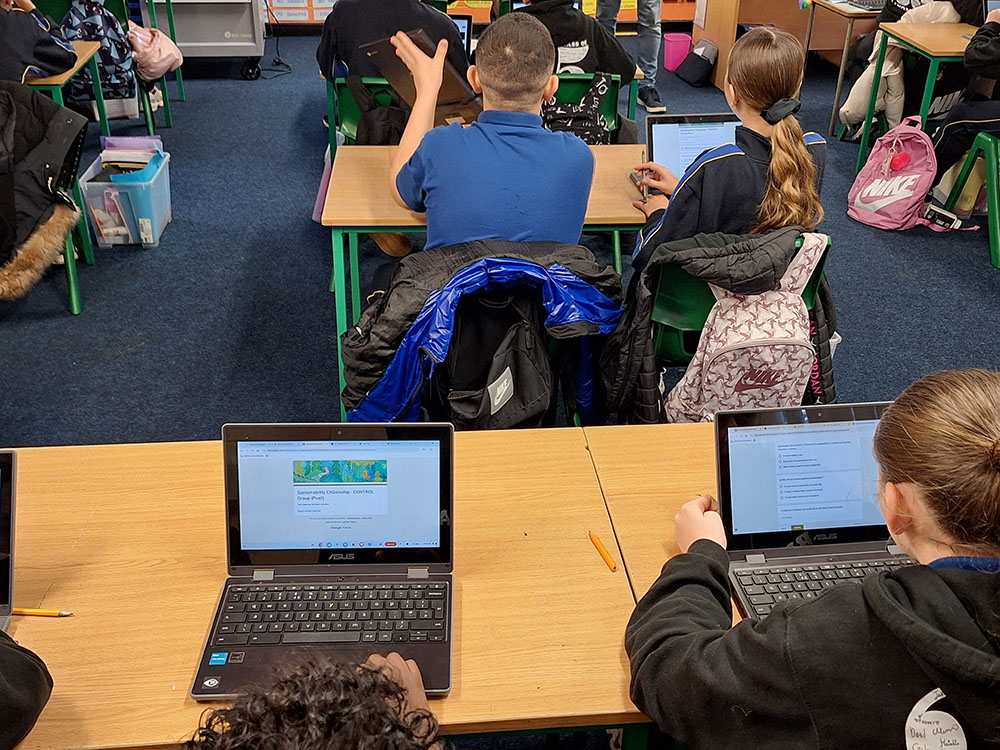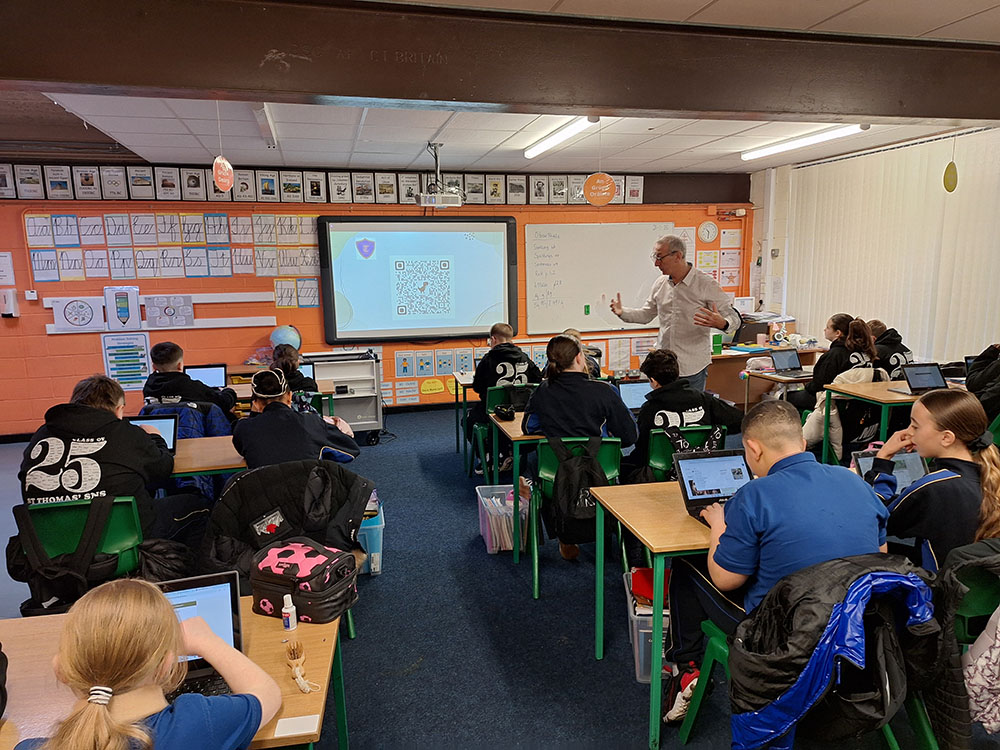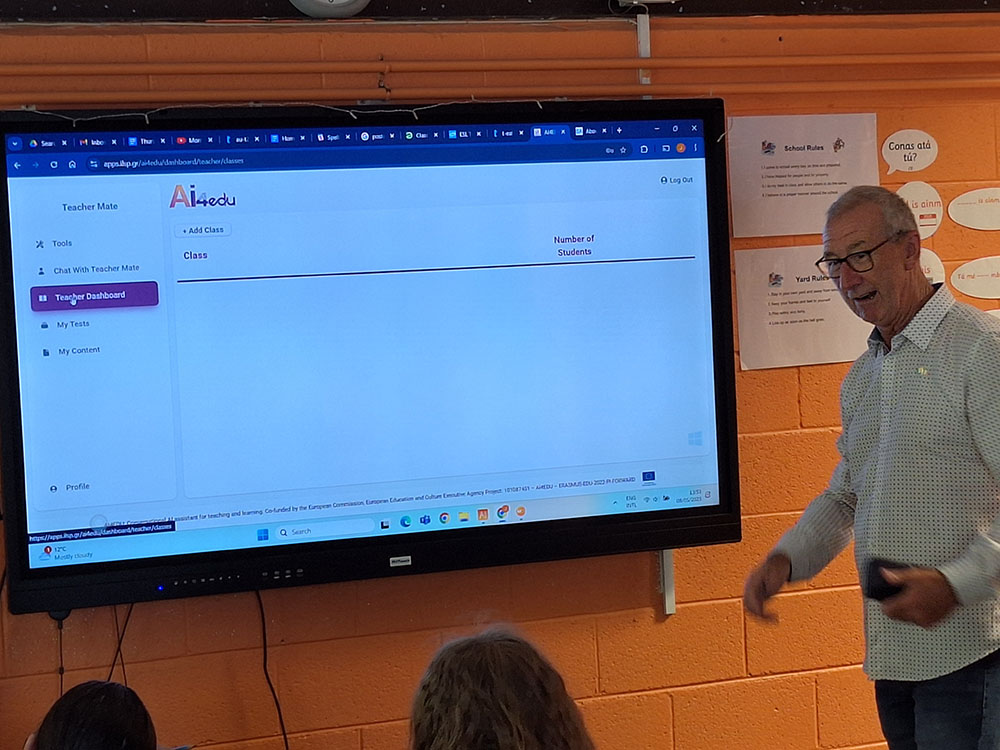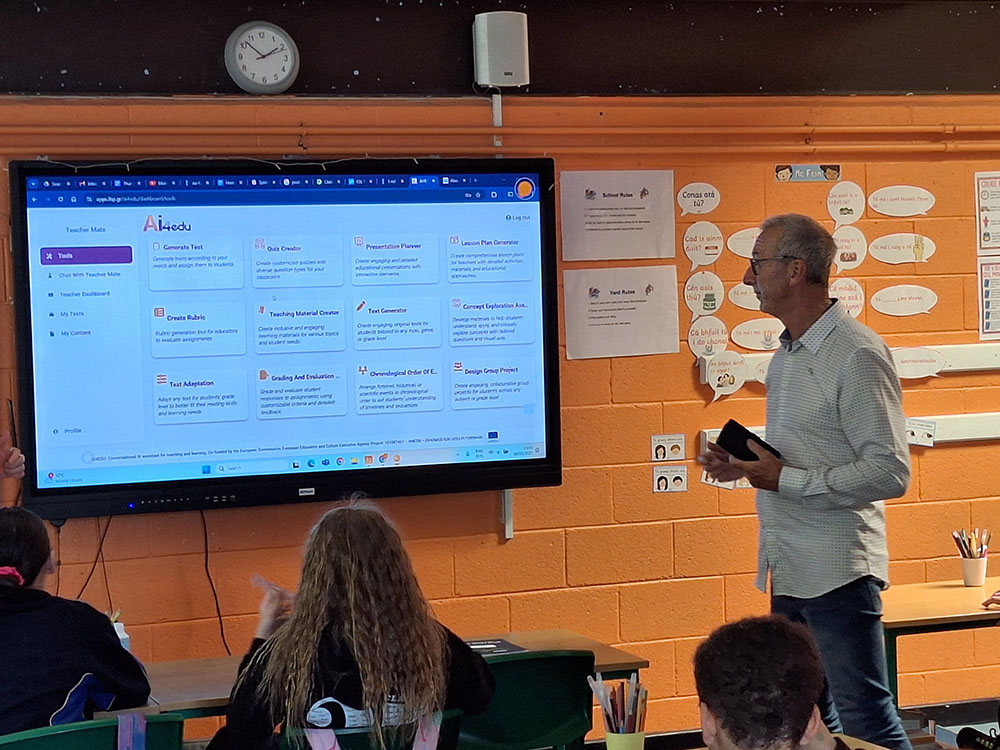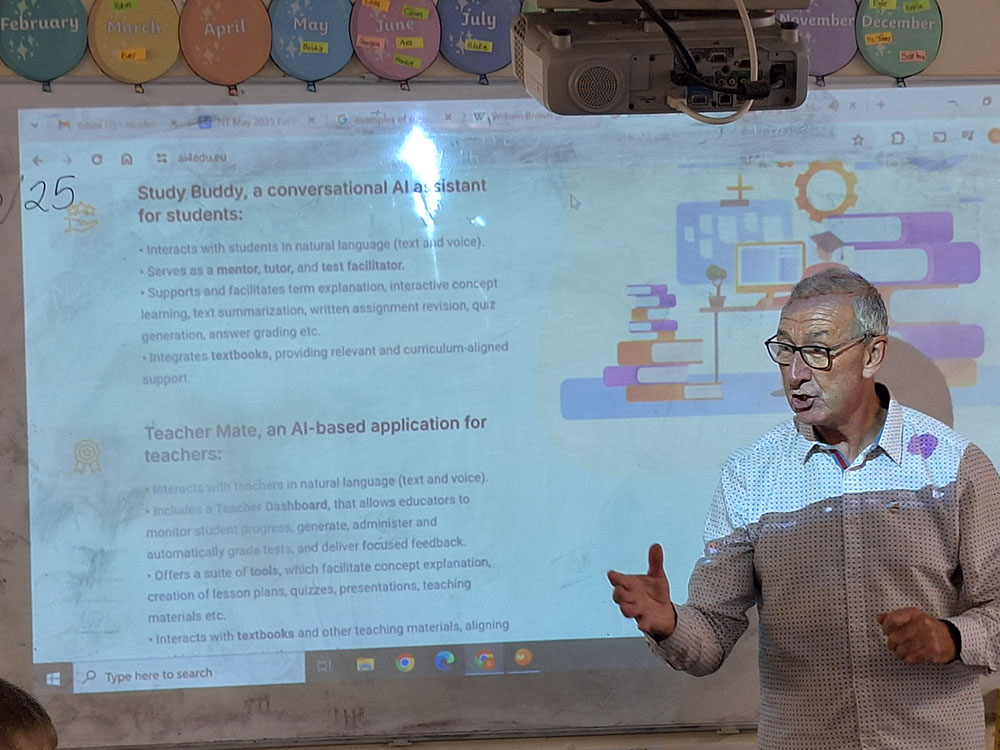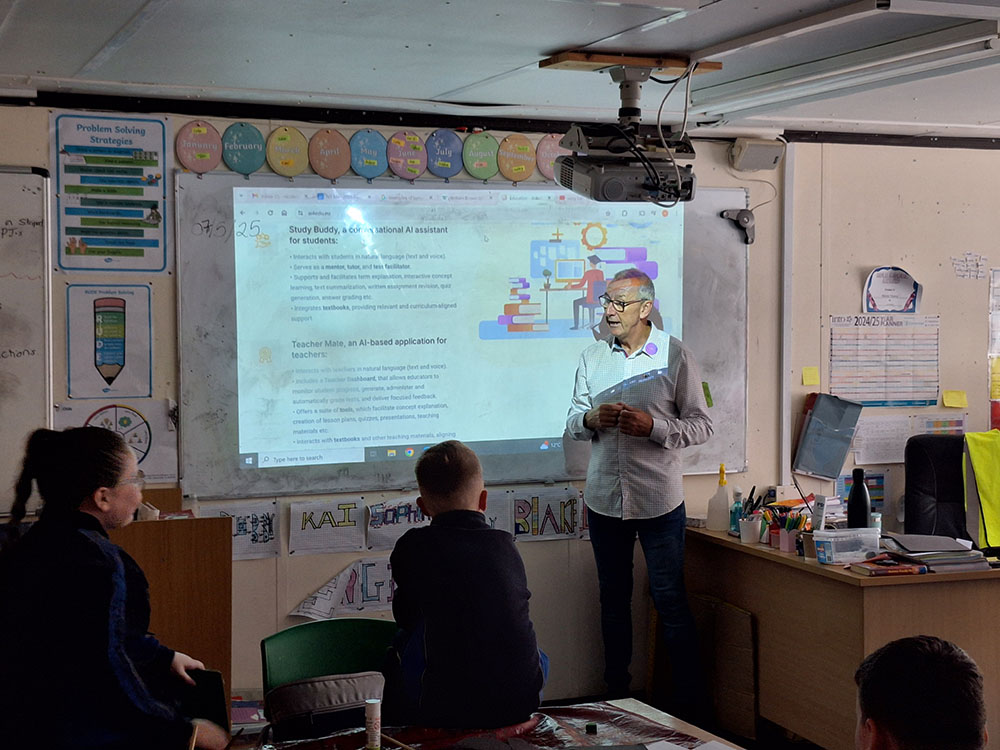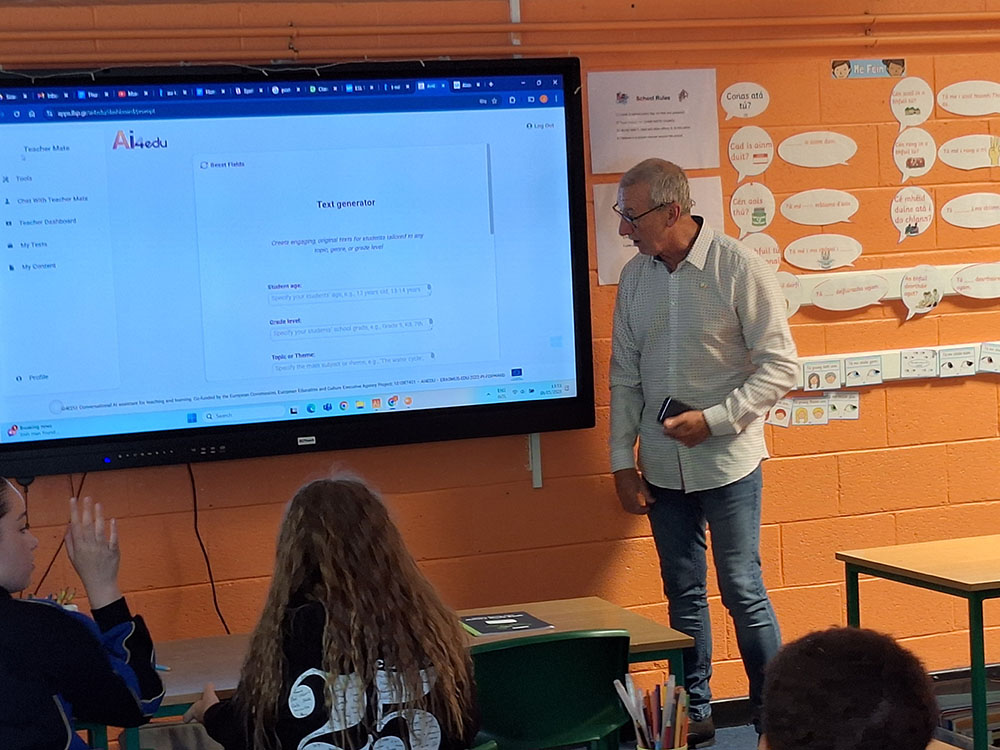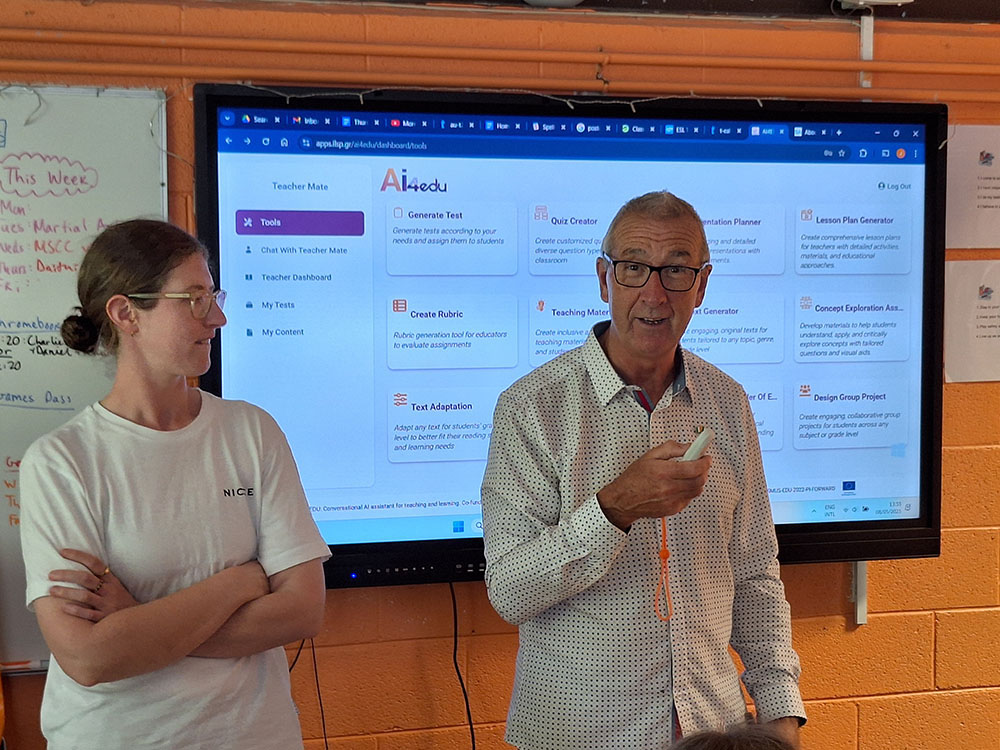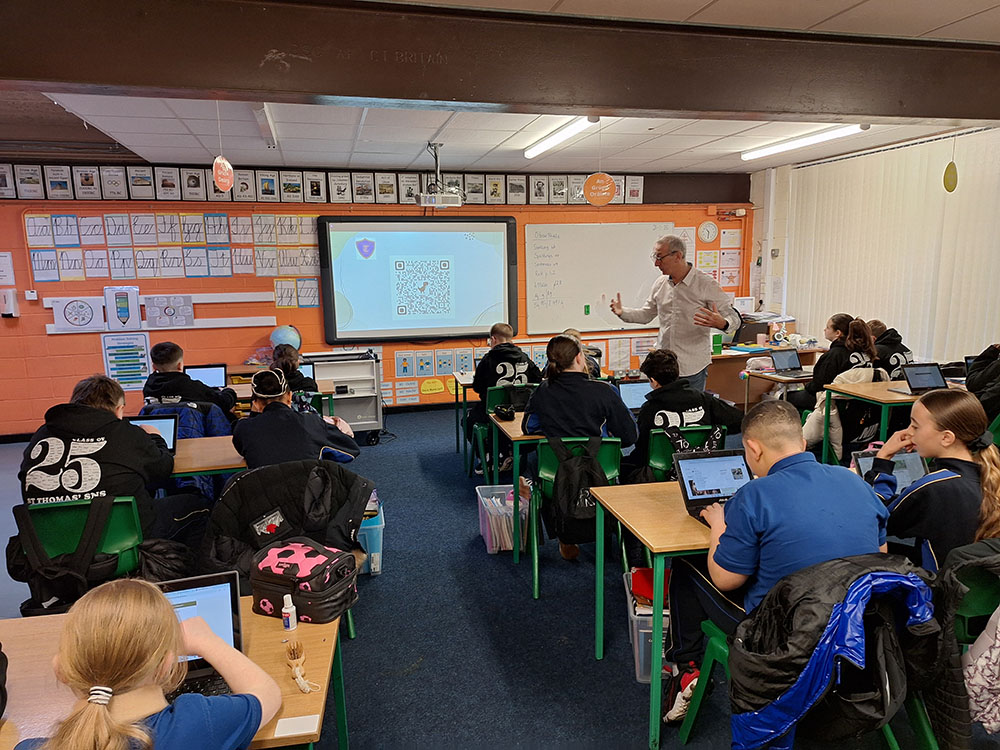
From January to May 2025 classroom pilots were conducted across the four project countries to explore how AI tools support teaching, learning, and student academic performance, motivation and engagement. For SB, a control–experimental group comparison approach was adopted:
- In the experimental group, students used SB either outside class (e.g., for self-study, homework, and test preparation) or in class (e.g., for activity completion, formative evaluation, project-based or feedback-based learning).
- The control group followed traditional study practices without the use of AI.
All participating teachers used TM to support their teaching in both the control and experimental groups, ensuring a consistent instructional baseline while isolating the impact of SB on student learning outcomes. More specifically, the pilots were implemented across the participating countries as follows:
- Cyprus: Four secondary teachers implemented pilots in Physics, Chemistry, and English Literature, employing the Study Buddy for both in-class and homework activities and for exam preparation. Experimental and control group consisted of 80 students each, of 8th to 11th grade.
- Greece: Pilots took place at Ellinogermaniki Agogi in Biology and History classes, combining in-class and homework use of Study Buddy for concept clarification and historical analysis tasks. 2 teachers were involved in pilots, while the experimental and the control group consisted of 92 and 66 students of 7th and 10th grade.
- Ireland: Implemented within St Thomas’ Senior National School in two phases (January and April-May 2025), pilots focused mainly on Sustainability Citizenship topics, integrating Teacher Mate and Study Buddy into in-class, teacher-led interdisciplinary, project-based learning on environmental topics. 6 teachers were involved, while experimental and control groups consisted of 60 students each (24 on first phase and 36 on second phase).
- Sweden: Conducted at Björknäsgymnasiet in Social Sciences and Biology, 2 teachers employed both assistants in lesson preparation and student assignments. Teacher facilitated both in-class and at-home student engagement with SB. Students in the experimental group were assigned specific activities via SB. Experimental and control groups consisted of 20 students each, from 10th grade.
The evaluation was organized into three key phases:
- Pre-implementation phase: This preparatory phase focused on establishing the necessary conditions for effective and ethical implementation. Activities included the recruitment of teachers and students, informed consent collection, teacher and student training sessions, and administration of baseline instruments.
- Implementation phase: During this phase, the AI4EDU applications were integrated into day-to-day teaching and learning practices. Teachers employed TM to support lesson planning, assessment, and instructional delivery, while students in the experimental groups engaged with SB either in class or at home, depending on the subject and national context.
- Post-implementation phase: The final phase included the administration of post-tests and collection of qualitative feedback through surveys, interviews, and usage data.
